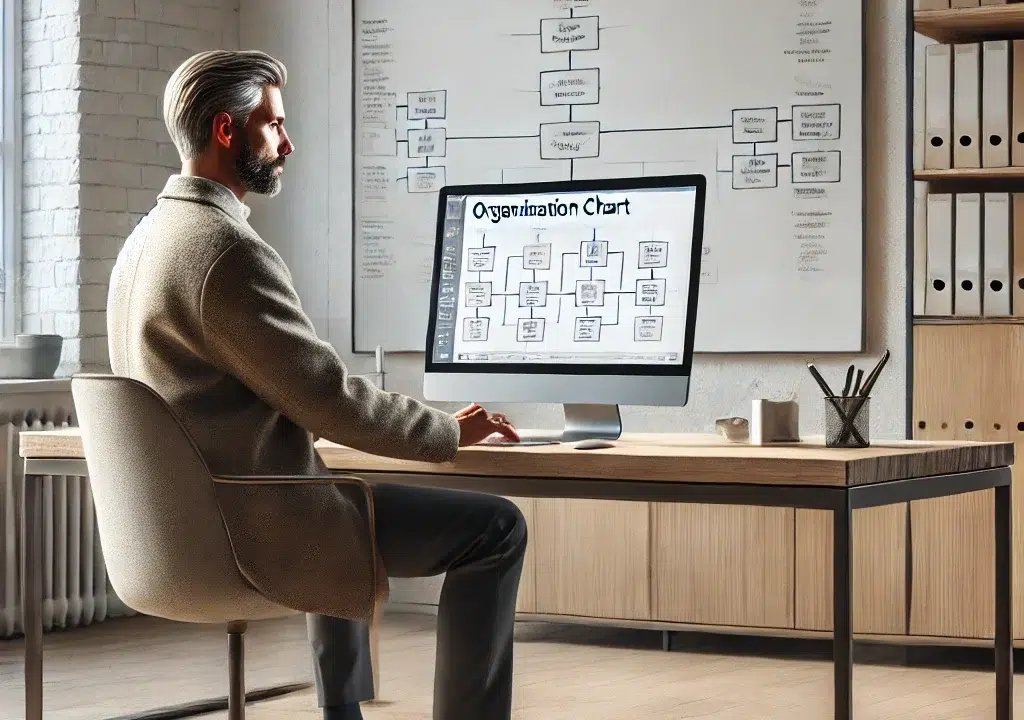How to organize the Procurement function and creating an effective organizational structure with clearly defined roles and responsibilities is crucial for any procurement department. It should ensure efficient operations, clarity in decision-making, and optimal utilization of resources.
Table of Contents
General principles when creating an organization
Here are some general principles to consider when establishing such a structure:
- Clearly Defined Objectives: Begin by defining the overarching objectives of the procurement function. These should align with the broader goals of the organization. Objectives might include cost savings, supplier relationship management, risk mitigation, or process efficiency.
- Role Clarity: Each role within the procurement department should have a clear and concise job description. This includes outlining specific responsibilities, required skills, decision-making authority, and performance metrics. Clarity in roles prevents overlaps and gaps in responsibilities.
- Hierarchy and Reporting Lines: Establish a hierarchy that supports effective communication and workflow. Decide on a structure (e.g., flat, hierarchical, matrix) based on the organization’s size and complexity. Clearly outline reporting lines to facilitate accountability and efficiency.
- Balance of Skills: Ensure that the team has a balanced mix of skills, including negotiation, analytical, relationship management, and technical skills. This diversity allows for handling various aspects of procurement effectively.
- Scalability and Flexibility: The structure should be scalable to adapt to business growth and flexible enough to respond to changes in the market or supply chain disruptions. This might involve cross-training employees or creating roles that can evolve over time.
- Integration with Other Departments: Procurement does not operate in isolation. Establish strong connections with other departments like finance, operations, and sales to ensure alignment and collaboration.
- Technology and Tools: Utilize technology to streamline processes and improve communication. Tools like procurement software, ERP systems, and data analytics can enhance efficiency and decision-making.
- Compliance and Ethics: Embed compliance with legal and ethical standards into every role. This includes understanding and adhering to regulations, company policies, and ethical sourcing practices.
- Continuous Improvement: Encourage a culture of continuous improvement. Regularly review roles, responsibilities, and processes to identify areas for improvement or upskilling.
- Change Management: Implementing a new structure or modifying an existing one requires effective change management. Communicate changes clearly, provide training where necessary, and seek feedback from the team.
How to organize the Procurement function?
Well, there is of course not one single solution on how to organize the Procurement function. Type of business, history of the company, market and products position, size and footprint, resources available, procurement maturity and more influence how the roles and resources are organized.
Still, on Basic level, I believe showing a generic, modern procurement organization, with roles and responsibilities, is a good way to introduce buyers in training to the procurement function and the challenges faced by a CPO.

Sustainability: The change ongoing at the moment is a huge factor for a company’s success. Having a dedicated resource connected to the change is required to train the Category Management teams to drive conversion of supply chains.
Data and analytics: The access to data is huge and, organizing the data in a relevant way (including data collection), and assure information support decision making is hard.
PM & T: Developing the processes, methods and tools to meet current and future requirements make the different. Assure all relevant requirements are available to the teams as well as improving productivity of the procurement function.
Projects: Connect the Product development (TTT, TTM) with Category teams and Sourcing factory. Assure supply chains, for new and upgraded products, are built in inline with Category strategies.
Category management: Host the cross-functional teams which manage relevant categories.
Sourcing factory: Manage the value creating tasks as; supplier onboarding, sourcing and the “know your supplier process”.
Operative: Handle the day to day activities in relation to the suppliers. PO management with supporting activities.
Learn more about how to organize the Procurement function in the basic level course for the Procurement manager role.
How to organize the Procurement function? Well, there is of course not one single solution on how to organize a Procurement function. Type of business, history of the company, resources available and more influence how the roles and resources are organized. Still, on basic level, LHTS believe showing a generic, modern procurement organization, with roles and responsibilities, is a good way to introduce buyers in training to the procurement function and the challenges faced by a CPO.
To the Procurement organization course.
Information about our Online Procurement courses in Swedish.
